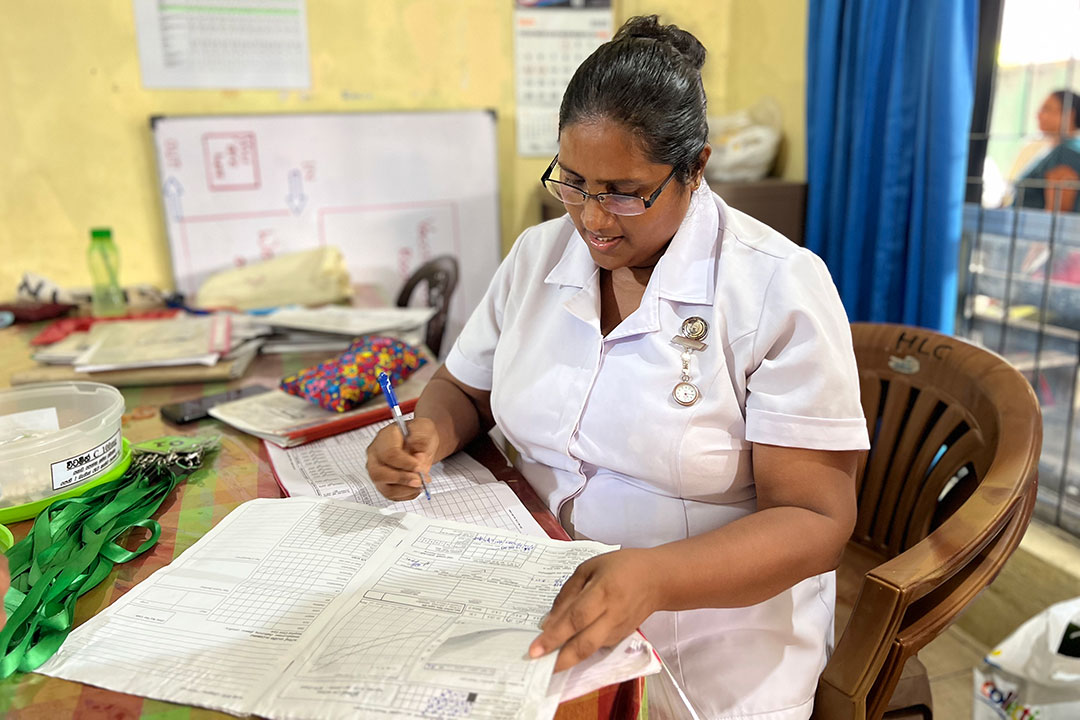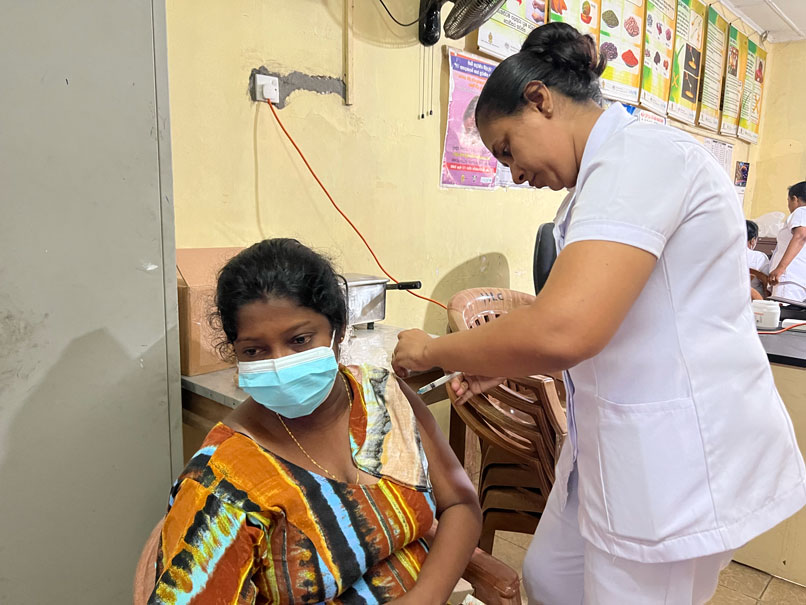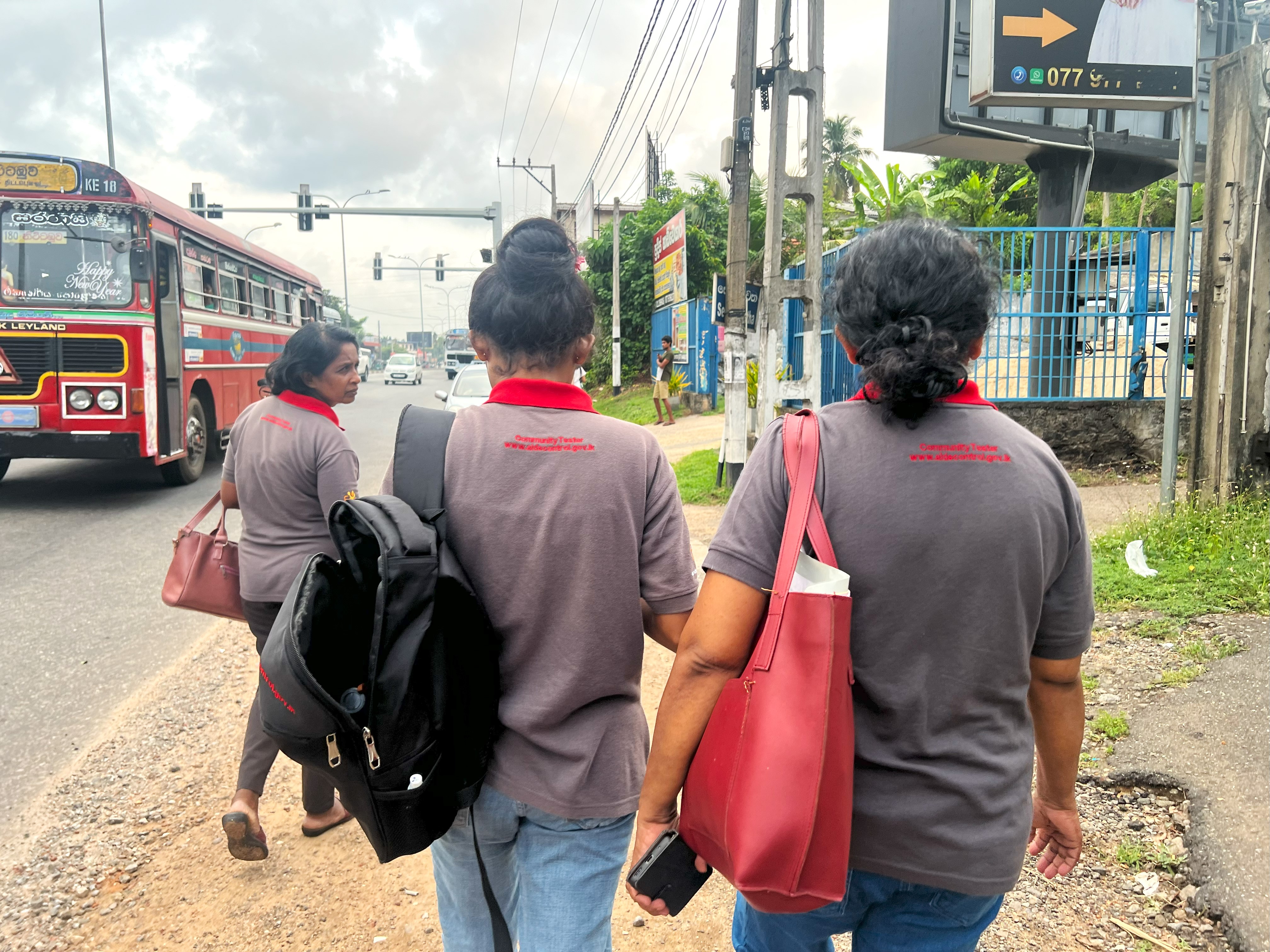Always on call: in Sri Lanka, a community midwife’s work never stops
After more than a quarter century, Samanthi Priyangika Dias still finds her work “fascinating”. She also wishes the contributions of public health midwives were better valued.
- 6 March 2024
- 5 min read
- by Aanya Wipulasena
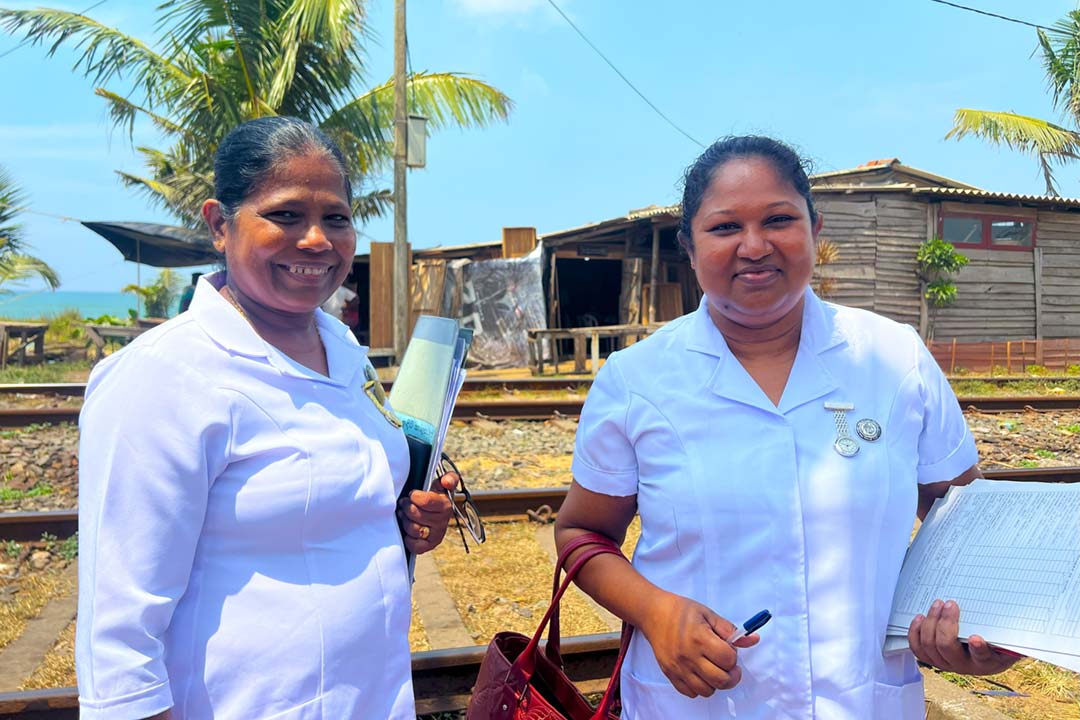
Samanthi Priyangika Dias has many titles. The 56-year-old from Piliyandala, a suburb of Colombo, is formally a Supervising Public Health Midwife (SPHM), an essential role in Sri Lanka's renowned primary health care system. But to the families she looks after, she's known by a simpler title: "Miss Aunty".
To her colleagues, she's a mentor. Until recently she was the principal in her church's Sunday school; she's also a mother and, of course, a life-saver. What brings her the most joy? Dias says it's working with the community.
“I enjoy working with communities that need my services more and, in this area, there are extremely underprivileged people who need our help”
– Samanthi Priyangika Dias, Supervising Public Health Midwife (SPHM)
Dias was in her early twenties when she got a job as a health care worker. After her father passed, she took over the responsibility of fending for her mother and siblings. It didn't make her doubt her professional path.
"I was doing so much for people in need, and decided to continue my work as a midwife," Dias said.
She went on to work for 25 years as a midwife in Piliyandala, transferring to Egodauyana, about 13 km from Piliyandala, six years ago.
Prepared for anything
Now the Supervising Public Health Midwife, she directs 22 midwives and cares for a population of over 80,000 residents.
"The area where I work is very fascinating. On one side we have the fishing community on the beach side, and then we have the woodworkers, and also the high-income earners," Dias said.
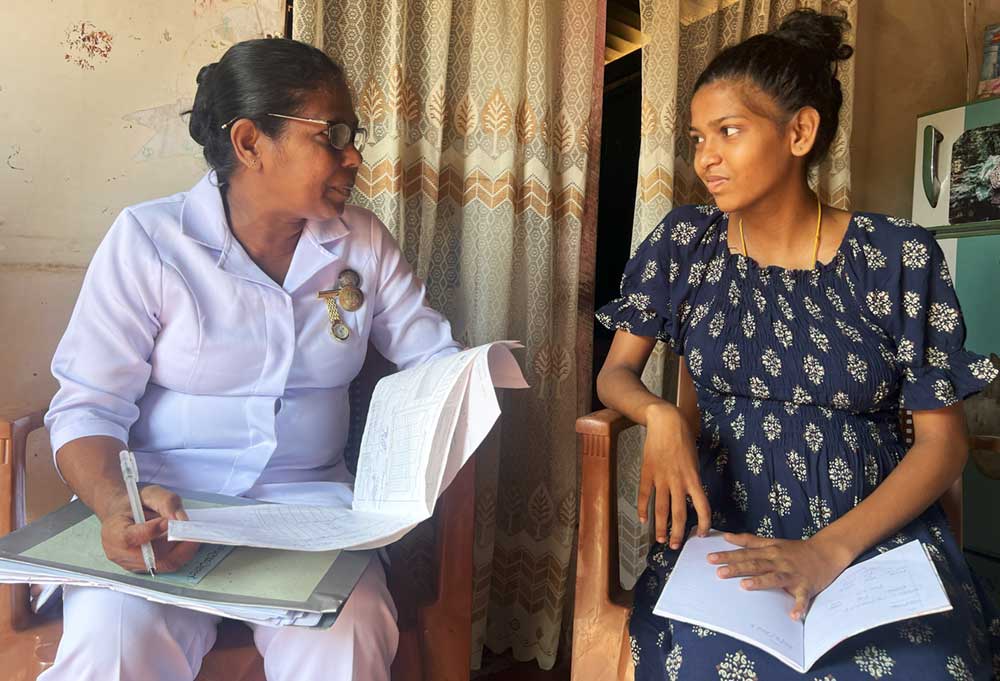
Credit: Aanya Wipulasena
With such a diverse population, Dias and other midwives in the area must always be equipped to handle any health or social issues. The biggest challenges in the area, Dias said, are teen pregnancies and malnutrition.
"We work very hard to educate young girls about sexual health. Last year we set up youth teams and conducted awareness programmes," she said. These trained youths were told to spread this information among their peers.
"There are times people see me on the bus and ask me for health-related advice. People come to my house too and I get phone calls all the time"
– Samanthi Priyangika Dias
This year, Dias and her team are planning to select areas where teen pregnancies are high and use new ways to educate them. "We are planning street performances," she said.
Dias is also conducting a monthly programme named Yowun Piyasa (Youth Hub) for children aged 10 to 19 years, where she does medical check-ups, provides necessary immunisations, and even helps them to find counselling when needed. In the field, she educates youths who are living with their partners about family planning methods.
Have you read?
These strategies are working, a fact reflected in the data Dias has gathered. While in 2021 teen pregnancies in Egodauyana were 8.1% of total pregnancies, in 2023 that figure has come down to 6.2%.
"I enjoy working with communities that need my services more and, in this area, there are extremely underprivileged people who need our help," Dias said.
"Miss Aunty" to the rescue
Typically, Dias works five-and-a-half days a week. In the office, she collects data from other midwives and inputs it into the system. That helps her to keep track of any health trends.
But her work does not end when she signs off. "There are times people see me on the bus and ask me for health-related advice. People come to my house too and I get phone calls all the time," she said smiling, and adding that she works day and night.
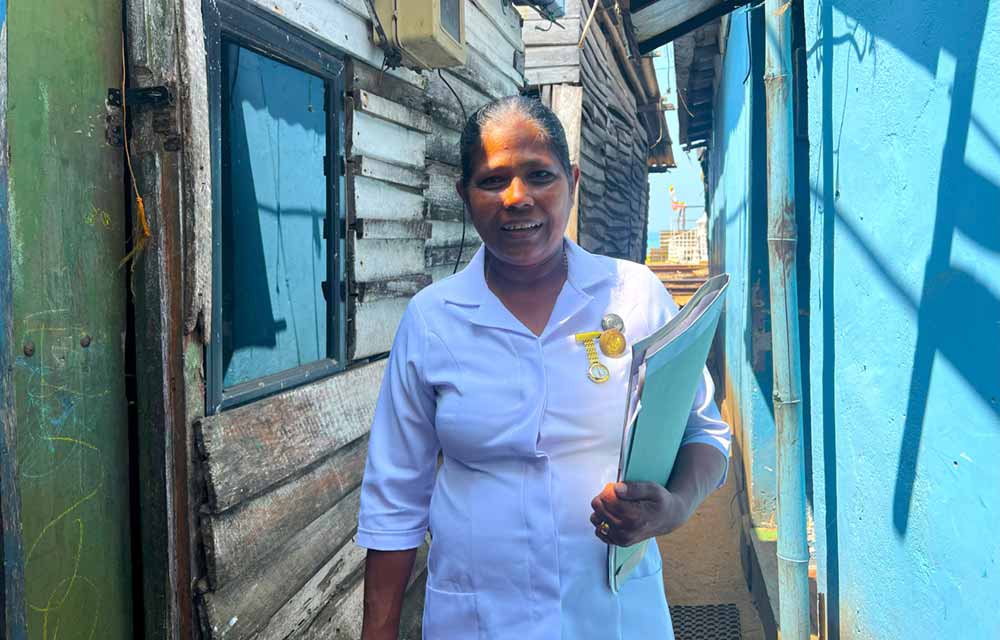
Credit: Aanya Wipulasena
People affectionately call her "Ape Missy" (our Miss) or "Miss Nanda" (Miss Aunty), a signal, it would seem, of closeness. "We are always in the field. We go to the grassroots and doorstep to provide our service. This brings us close to the communities we work with, and they trust us," Dias explained.
“When we go to the field, we go with four eyes. We can instantly sense when something is amiss.”
– Samanthi Priyangika Dias
Her proximity to the community has been a literal life-saver, many times over. During one of her field visits, she found a new mother's C-section wound opening due to badly done sutures. Dias immediately took steps to rush the ailing mother to a hospital. The doctor who attended the new mother commended Dias for her prompt action.
"When we go to the field, we go with four eyes. We can instantly sense when something is amiss," Dias said.
Essential, but often overlooked
But, Dias said, their work often goes unnoticed at the higher level, despite public health midwifery having contributed to Sri Lanka's widely praised free and universal health care system. There's much that needs to be done for these health care workers.
“Most often we spend about 10% of our salary to do our work”
– Samanthi Priyangika Dias
Midwives like Dias use their own transport, often a scooter, to go into the field. They are often given a meagre seven Sri Lankan rupees (US$ 0.023) per kilometre. Some midwives don't even have an office space provided by the government, and pay up to 10,000 Sri Lankan rupees (nearly US$ 33) out of pocket to rent a room to set up an office in their area.
Amid Sri Lanka's recent economic crisis, midwives say they often don't receive their stationery on time, leaving them to buy their own writing paper and pens to do their work.
"Most often we spend about 10% of our salary to do our work," Dias explained, adding that one of the most pressing issues is the delay in getting promotions.
Health care workers are currently having discussions with the government to increase the allowance that is paid to them, to reflect the current cost of living.
Still, there's some cause for optimism in recent policy shifts, Dias says. Sri Lanka Health Ministry officials have decided at to set up 11 midwifery schools across the island this year. Currently, school-leavers who are hoping to become midwives go to the nursing and midwifery schools. The establishment of schools specialising in midwifery alone will attract more applicants, bolstering this workforce, Dias hopes.
For now, Dias is looking forward to International Women's Day. She has been invited to several events, including to head a team at a local health camp, where she will hold a talk on current health concerns.
More from Aanya Wipulasena
Recommended for you




